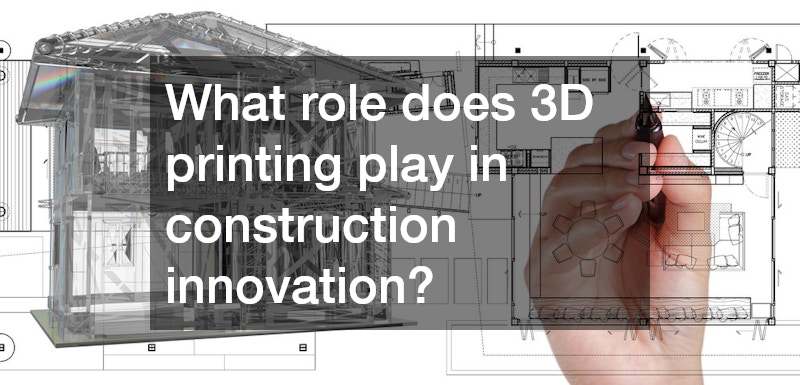
In the rapidly evolving world of construction, technology is no longer a luxury—it’s a necessity. Contractors across various sectors, including tree care companies, roofers, and industrial electricians, are increasingly turning to innovative solutions to streamline operations, enhance productivity, and ensure safety. From managing the disposal of construction waste to improving communication on-site, leveraging technology can significantly impact a contractor’s daily workflow. This article explores the various ways contractors can utilize technology to create a smoother workday, focusing on benefits such as improved efficiency, enhanced safety, and cost savings.
1. What are the benefits of using more technology in construction projects?
1.1 Improved Efficiency and Productivity
One of the primary advantages of integrating technology into construction is the boost in efficiency. Whether it’s a tree care company using specialized software to schedule jobs or a roofer employing drone technology for inspections, technology allows for faster, more accurate operations. By automating routine tasks, contractors can allocate resources more effectively, resulting in significant time savings.
1.2 Enhanced Safety and Risk Management
The construction industry is fraught with hazards, making safety a top priority. Utilizing technology such as wearable devices can enhance safety protocols by providing real-time health monitoring and alerts for hazardous conditions. For example, industrial electricians can use advanced safety gear that tracks exposure to electrical hazards, or those using crane rentals can track how well the equipment is functioning, allowing for immediate action to mitigate risks.
1.3 Cost Savings and Budget Management
Technology can also contribute to substantial cost savings. By utilizing project management software, contractors can keep track of expenses in real time, helping to avoid budget overruns. Moreover, precise inventory management systems can reduce waste, particularly in the disposal of construction waste, thus saving money on landfill fees.
2. How can project management software streamline daily activities?
2.1 Time Tracking and Scheduling
Project management software is a game-changer for contractors, allowing for efficient time tracking and scheduling. For example, a tree care company can schedule multiple jobs while ensuring their team has adequate time for travel and setup. This software enables contractors to visualize their daily, weekly, and monthly commitments, leading to better planning and execution.
2.2 Task Assignment and Progress Monitoring
The ability to assign tasks and monitor progress is another key feature of project management tools. Roofers can allocate specific responsibilities to team members and track completion rates, ensuring everyone is accountable. This level of organization reduces confusion and delays, facilitating smoother workflows.
2.3 Communication and Collaboration Enhancements
Enhanced communication capabilities are critical for contractors managing large teams. With integrated project management tools, industrial electricians and other trades can share updates instantly, eliminating the need for time-consuming meetings. This improved collaboration leads to quicker problem resolution and fosters a more cohesive work environment.

3. What role does technology play in improving communication on-site?
3.1 Real-Time Updates and Notifications
In the fast-paced construction environment, real-time updates are vital. With mobile applications, contractors can send notifications about changes in plans or schedules directly to team members. For example, a roofer might alert their crew about adverse weather conditions, allowing them to make necessary adjustments swiftly.
3.2 Virtual Meetings and Conferencing
Virtual meetings have become increasingly popular, allowing contractors to communicate with clients and team members regardless of location. This flexibility is particularly useful for those managing multiple projects, such as specialty wood product manufacturers who need to coordinate efforts between sites.
3.3 Integrated Platforms for Teams
Integrated communication platforms enable seamless information sharing among team members, whether they are working on metal buildings or commercial door installations. These tools facilitate document sharing, feedback, and discussions, ensuring everyone is on the same page.
4. How can contractors use more technology to manage resources more effectively?
4.1 Inventory Tracking and Management
More technology can vastly improve resource management through advanced inventory tracking systems. Contractors can monitor stock levels of materials like rebar products, ensuring they have what they need when they need it, reducing downtime and preventing costly delays.
4.2 Equipment Maintenance and Monitoring
Regular maintenance of equipment is crucial for avoiding breakdowns. Contractors can utilize IoT (Internet of Things) devices to monitor the health of their machinery, such as cranes rented for heavy lifting. Predictive maintenance can alert them when service is needed, preventing costly repairs and downtime.
4.3 Vendor and Supplier Management
Effective vendor and supplier management is essential for timely project completion. More technology allows contractors to maintain a centralized database of suppliers, facilitating easy comparisons and order placements. This efficiency is particularly beneficial for ac companies needing quick access to parts and materials for repairs.
5. What technological tools can assist with safety compliance?
5.1 Wearable Technology for Workers
Wearable technology, such as smart helmets and vests, can dramatically enhance safety compliance on job sites. These devices can monitor worker vitals and environmental conditions, alerting them to potential hazards—particularly crucial in high-risk environments like metal buildings.
5.2 Safety Training and Simulation Software
Advanced training tools, including virtual reality simulations, offer immersive experiences for safety training. Contractors can prepare their teams for real-life scenarios, minimizing the likelihood of accidents on-site.
5.3 Incident Reporting and Analysis Tools
Digital incident reporting tools streamline the process of documenting workplace accidents. By analyzing data from these reports, contractors can identify trends and implement preventative measures to enhance safety compliance across projects.

6. How does more technology aid in data collection and analysis for contractors?
6.1 Digital Data Collection Devices
Digital devices, such as tablets and smartphones, enable contractors to collect data efficiently on-site. This can include everything from material usage to labor hours, providing invaluable insights into project performance.
6.2 Analytical Software for Big Data
With the rise of big data, contractors can utilize analytical software to interpret vast amounts of information. This analysis helps identify inefficiencies and areas for improvement, allowing for more informed decision-making.
6.3 Predictive Analytics for Risk Assessment
Predictive analytics tools can forecast potential risks based on historical data, enabling contractors to take proactive measures. For instance, a roofer can anticipate adverse weather conditions that could delay a project, allowing them to plan accordingly.
7. In what ways can mobile technology and apps benefit contractors?
7.1 On-the-go Access to Project Information
Mobile technology offers contractors the flexibility to access project information from anywhere. This capability is crucial for those managing multiple jobs, such as ac companies coordinating various installations across town.
7.2 Mobile Inspection and Reporting
Mobile apps streamline the inspection and reporting process. Contractors can easily document site conditions and share findings with their teams, promoting accountability and ensuring that everyone is informed.
7.3 Enhanced Photo and Video Documentation
Mobile devices equipped with high-quality cameras allow contractors to capture detailed images and videos of their work. This documentation is invaluable for tracking progress, providing client updates, and addressing any disputes that may arise.
8. How are drones revolutionizing site surveying and monitoring?
8.1 Aerial Imaging and Mapping
Drones have transformed the way contractors survey job sites. Aerial imaging allows for detailed mapping and assessments, enabling contractors to visualize projects from above. This technology is particularly beneficial for large-scale operations, like those involved in metal buildings.
8.2 Site Progress and Surveillance
Drones can monitor site progress in real time, providing contractors with visual evidence of work completed. This capability enhances accountability among teams and can be instrumental in client presentations.
8.3 Environmental Impact Assessments
Drones also play a critical role in conducting environmental assessments. By capturing aerial footage, contractors can evaluate potential impacts on surrounding areas, an essential step for compliance in various projects, including those handled by specialty wood product manufacturers.

9. What are the implications of adopting automated machinery in construction?
9.1 Robotics and Autonomous Equipment
The adoption of robotics and autonomous equipment is reshaping the construction landscape. Contractors can leverage machines for repetitive tasks, such as lifting heavy materials, which can improve efficiency and reduce the risk of worker injuries.
9.2 Reducing Labor Costs and Errors
Automated machinery can significantly lower labor costs and reduce human error. For example, automated systems used in rebar products fabrication ensure precision and consistency, leading to higher-quality outcomes.
9.3 Scalability and Increased Production Speed
The scalability provided by automated equipment allows contractors to handle larger projects without a proportional increase in labor. This increased production speed can lead to quicker project completions, benefitting contractors across various trades.
10. How can Building Information Modeling (BIM) improve project outcomes?
10.1 3D Visualization and Design Accuracy
Building Information Modeling (BIM) provides contractors with a comprehensive view of project designs through 3D visualization. This accuracy reduces the likelihood of errors during construction, particularly in complex projects such as those involving metal buildings.
10.2 Enhanced Coordination and Collaboration
BIM fosters better collaboration among teams by allowing for real-time updates and modifications to designs. This feature is particularly useful for industrial electricians who need to coordinate with other trades during installation.
10.3 Lifecycle Management and Sustainability
BIM also aids in lifecycle management, helping contractors assess the sustainability of their projects. By analyzing materials and methods, contractors can make informed choices that minimize environmental impact, an essential consideration for modern construction practices.






